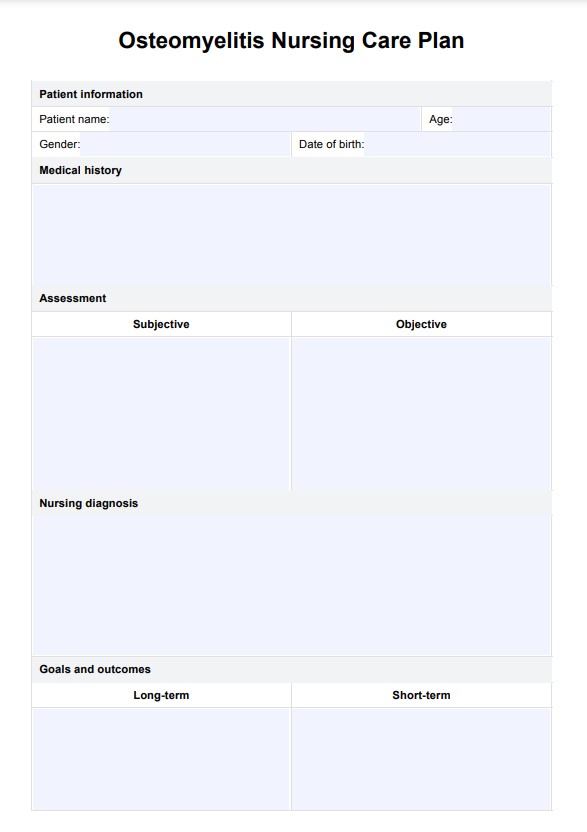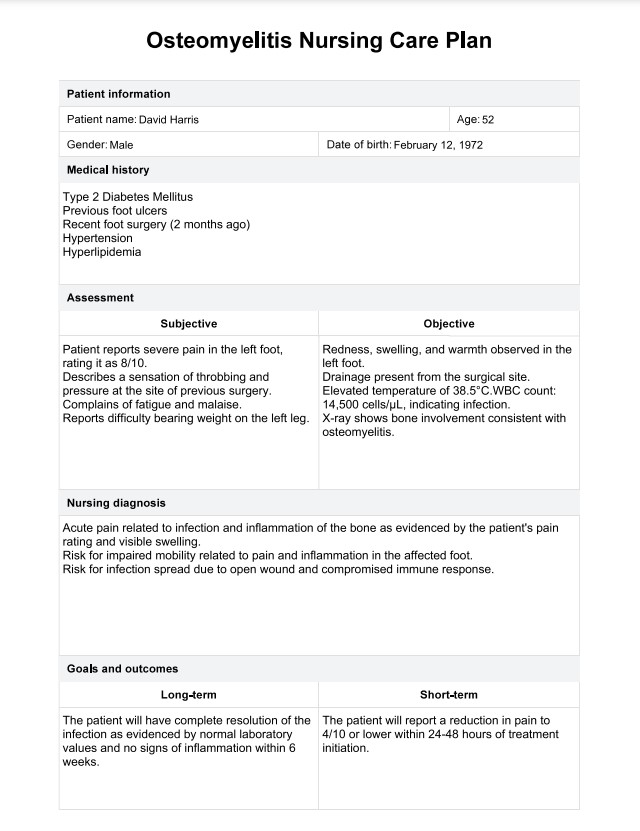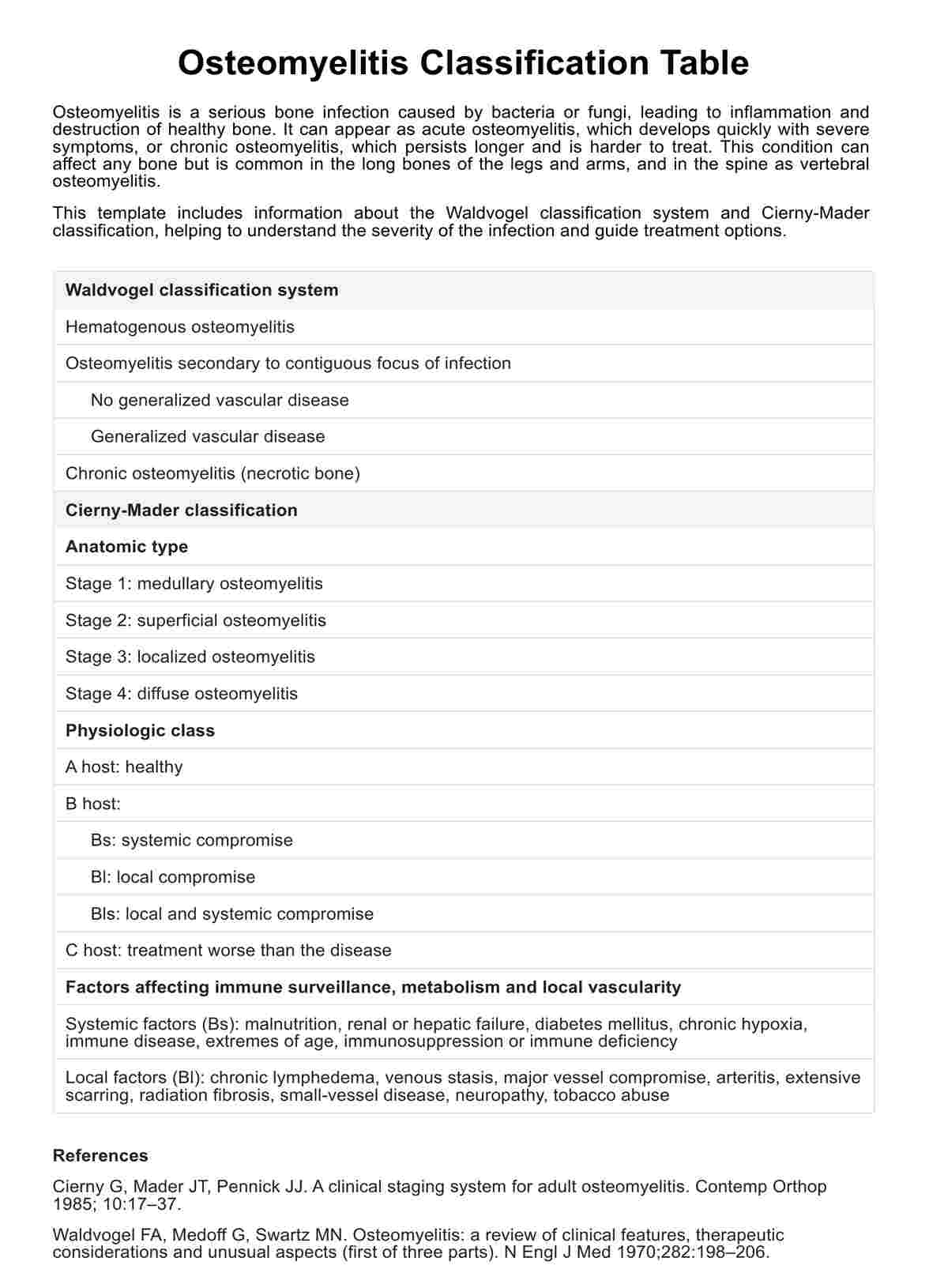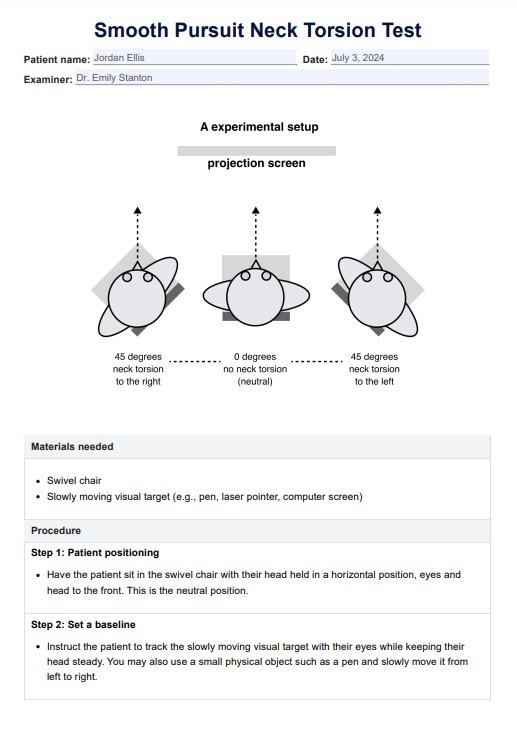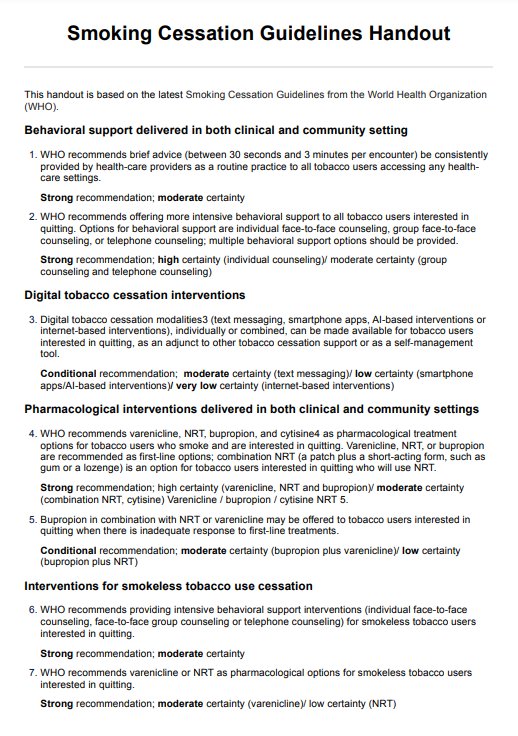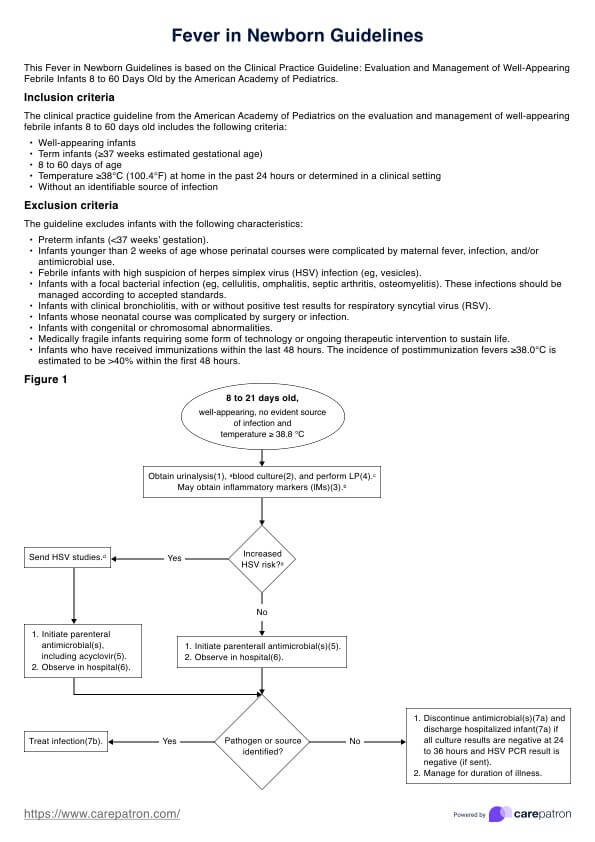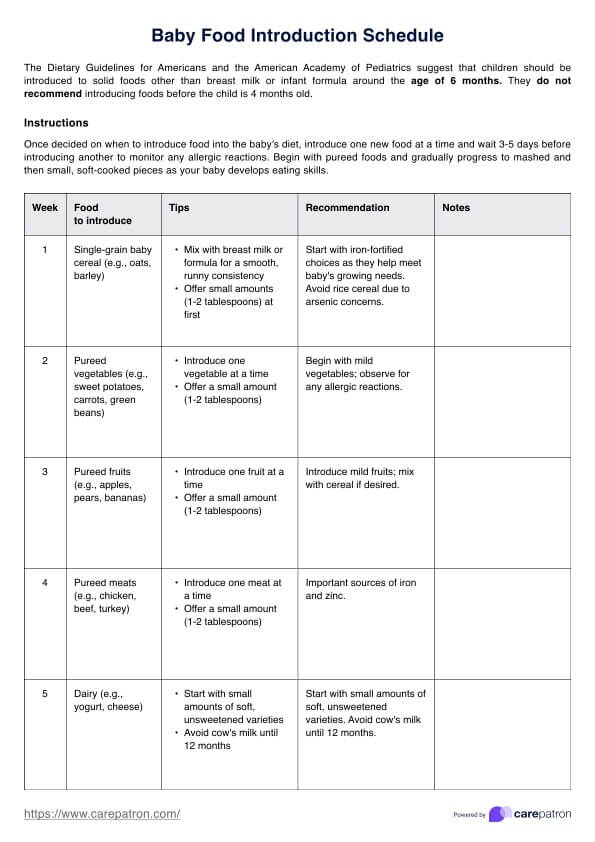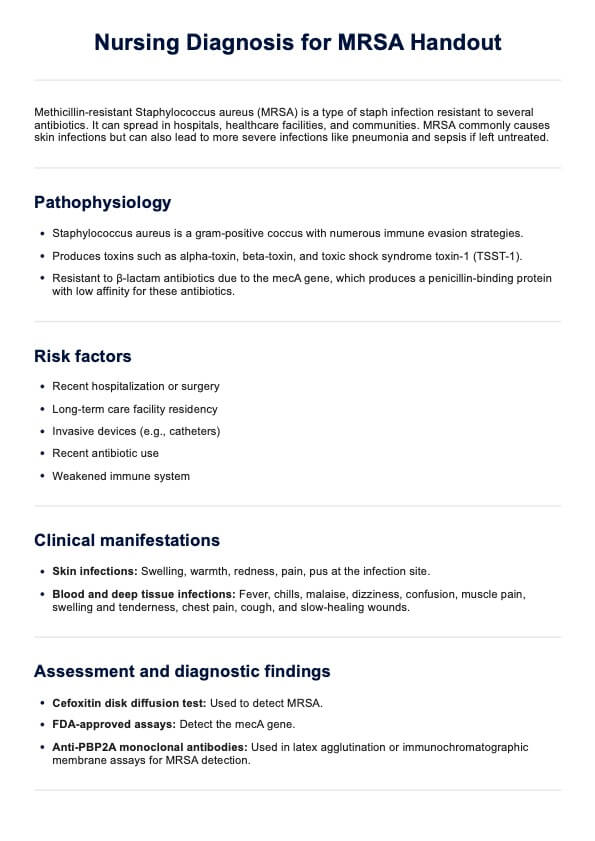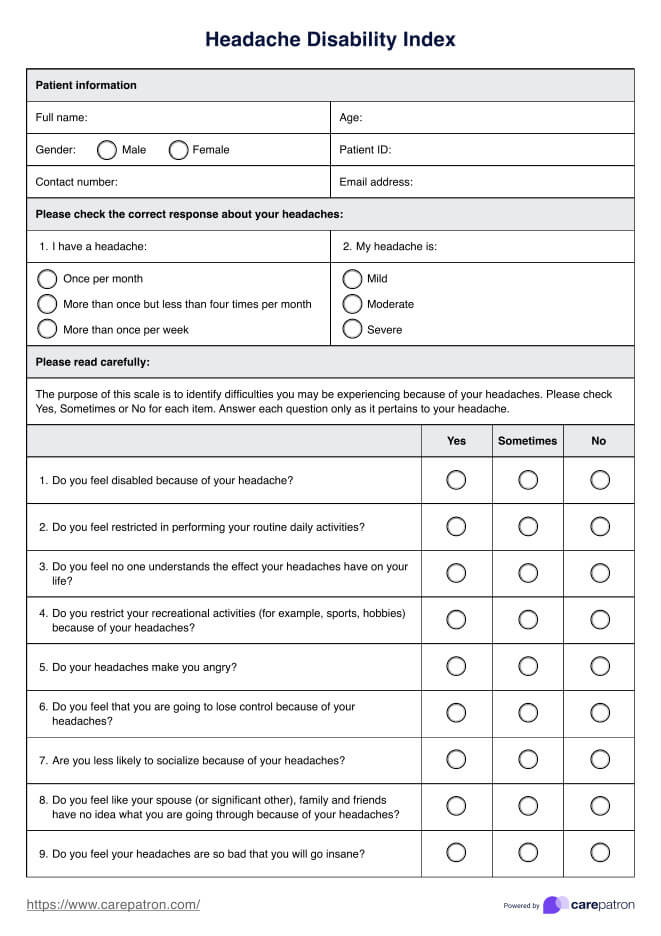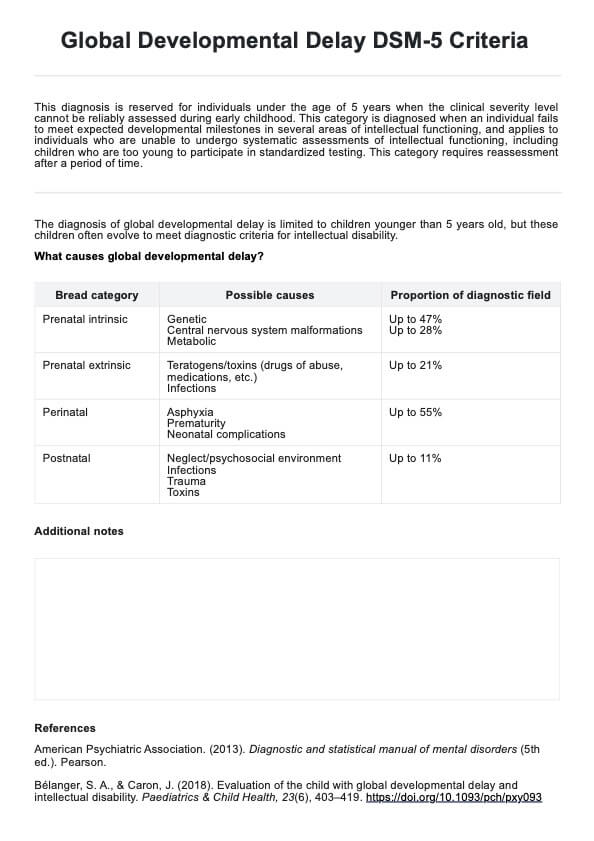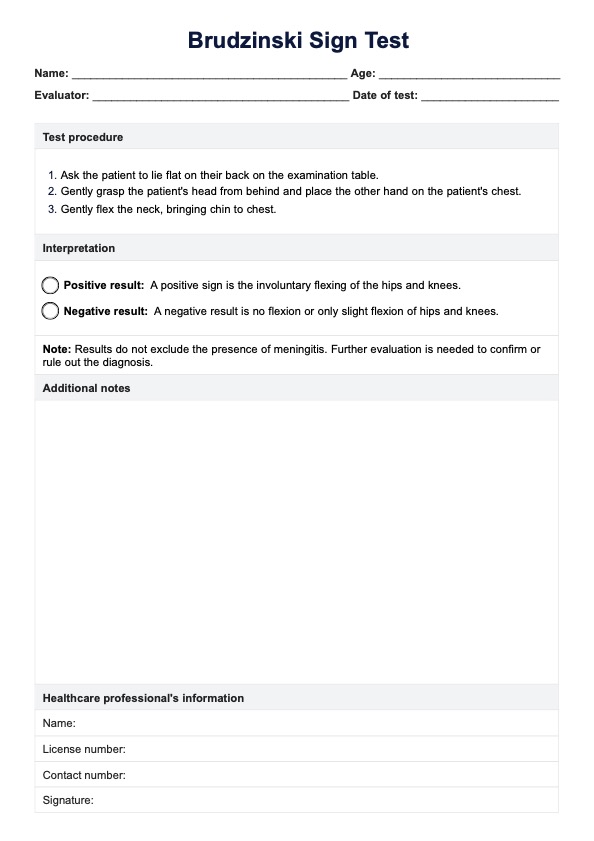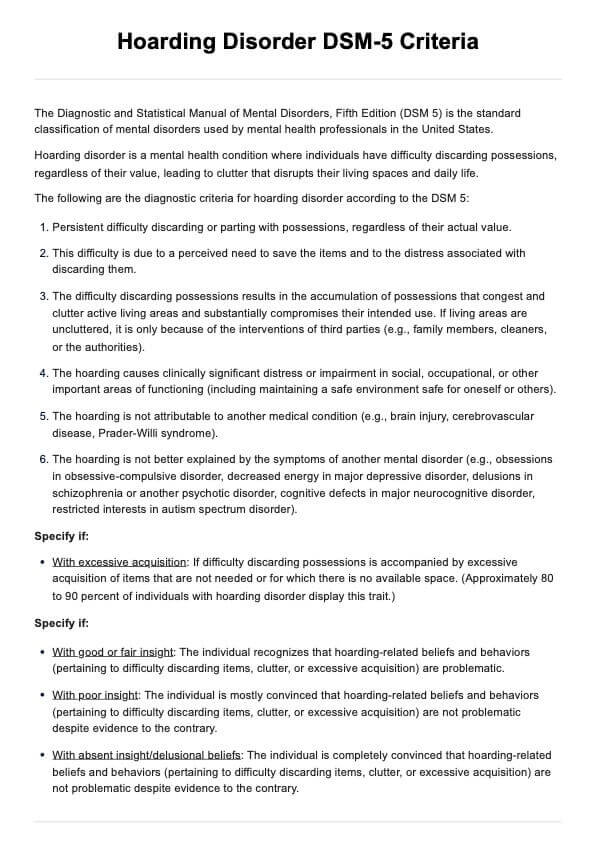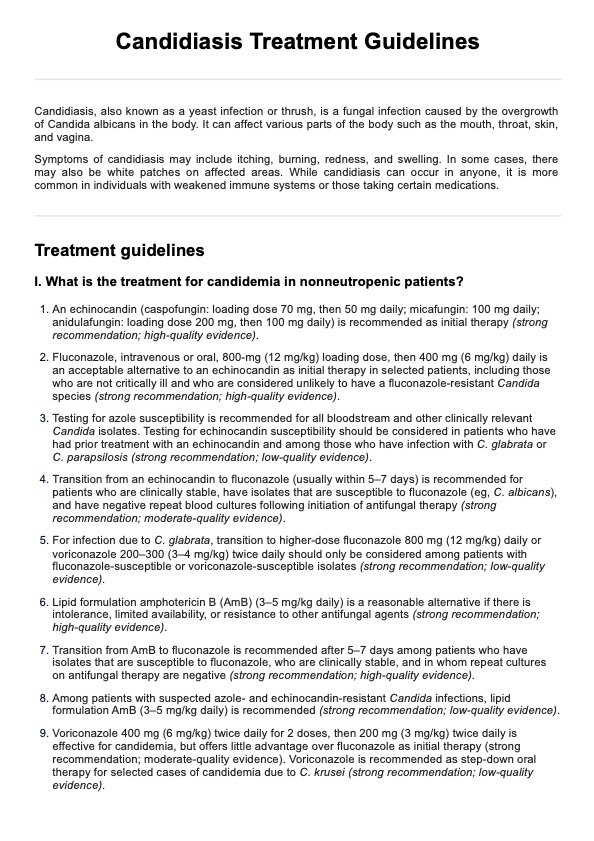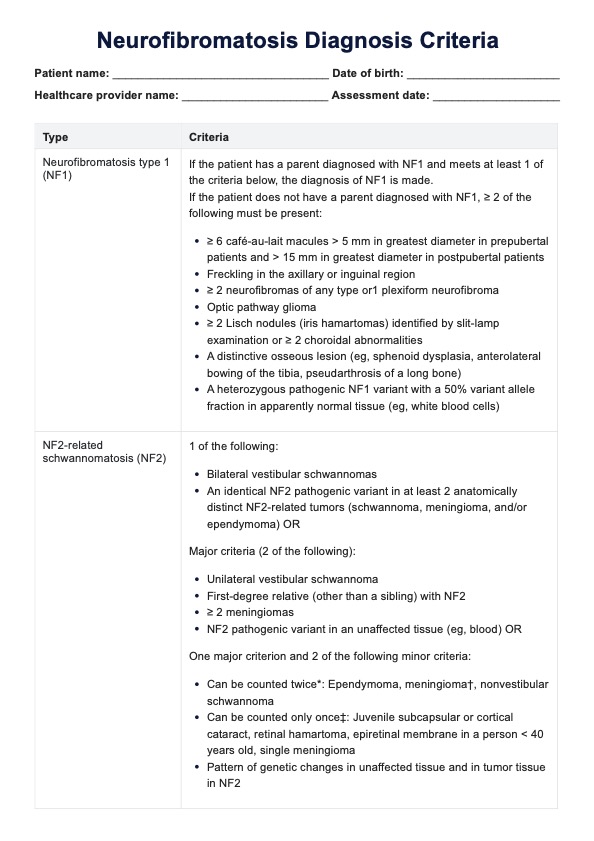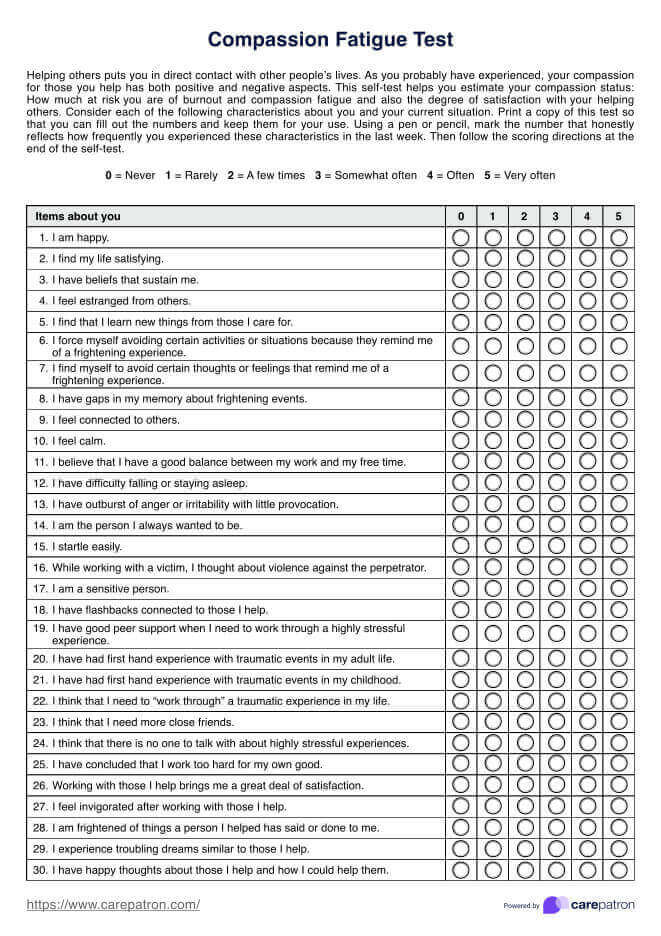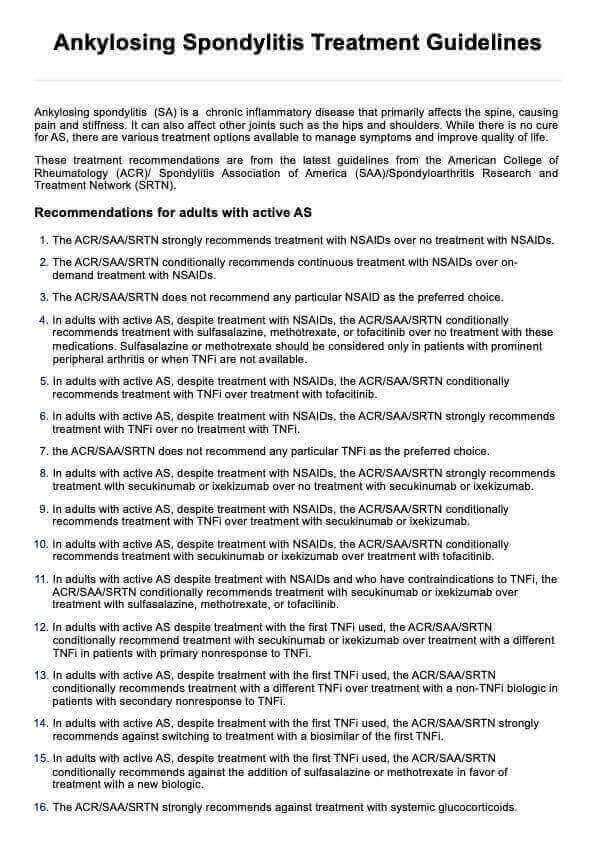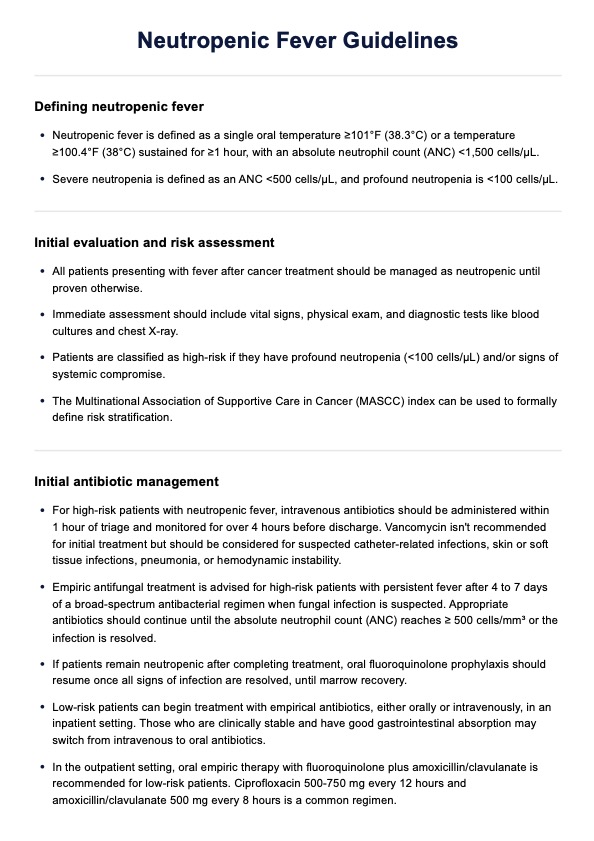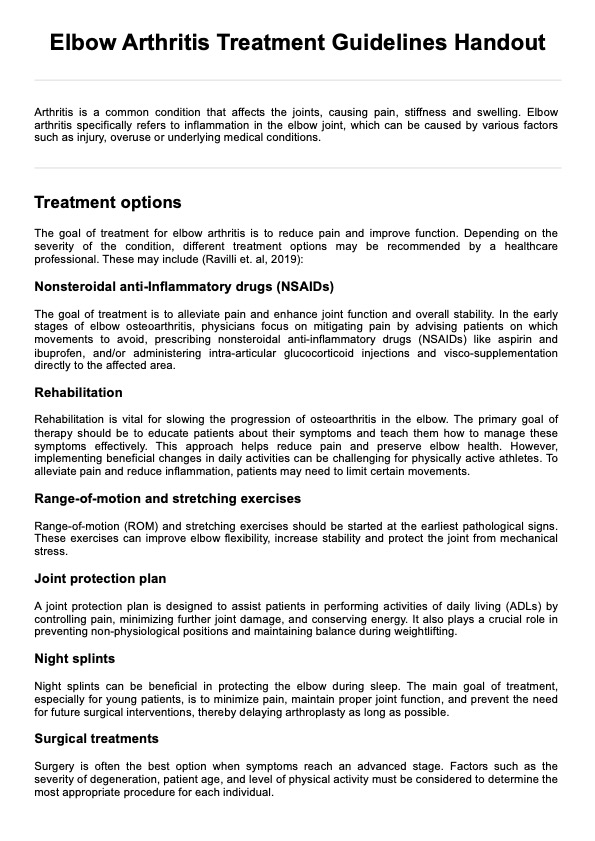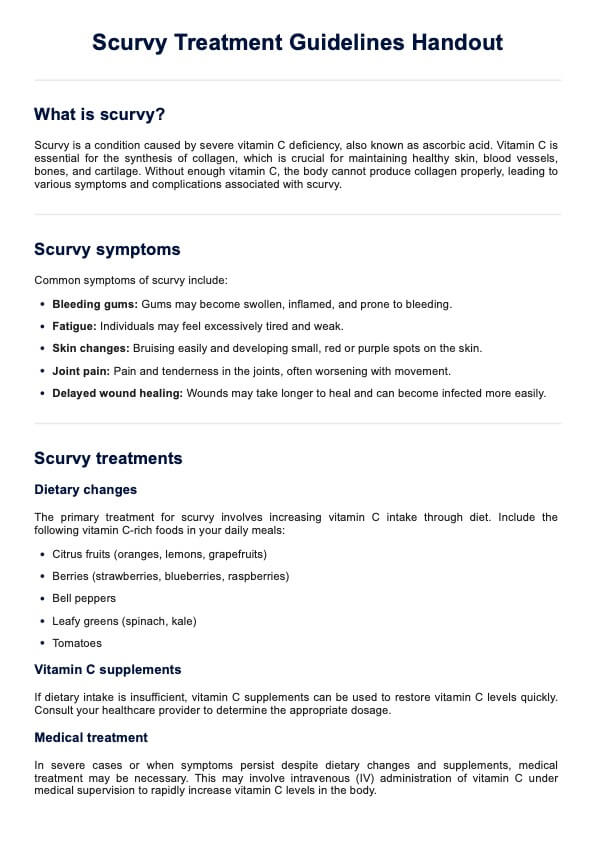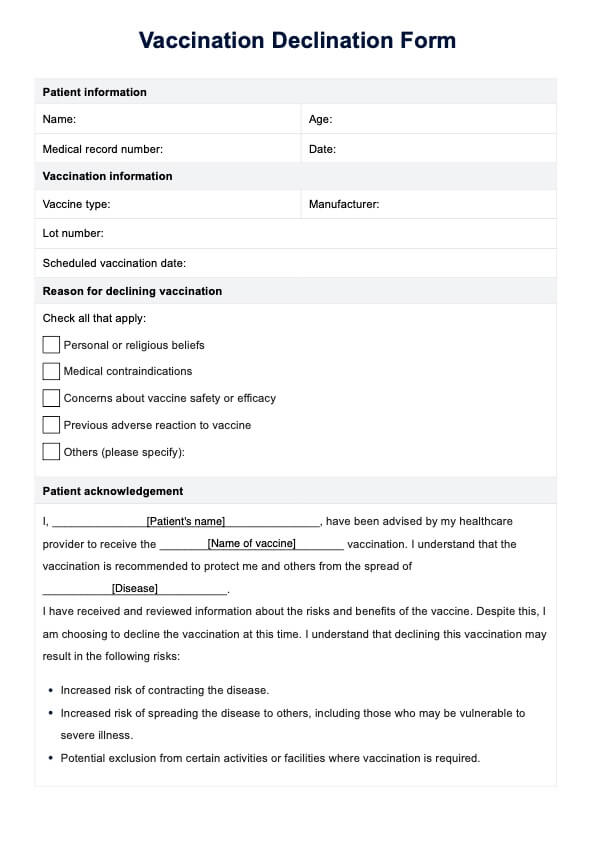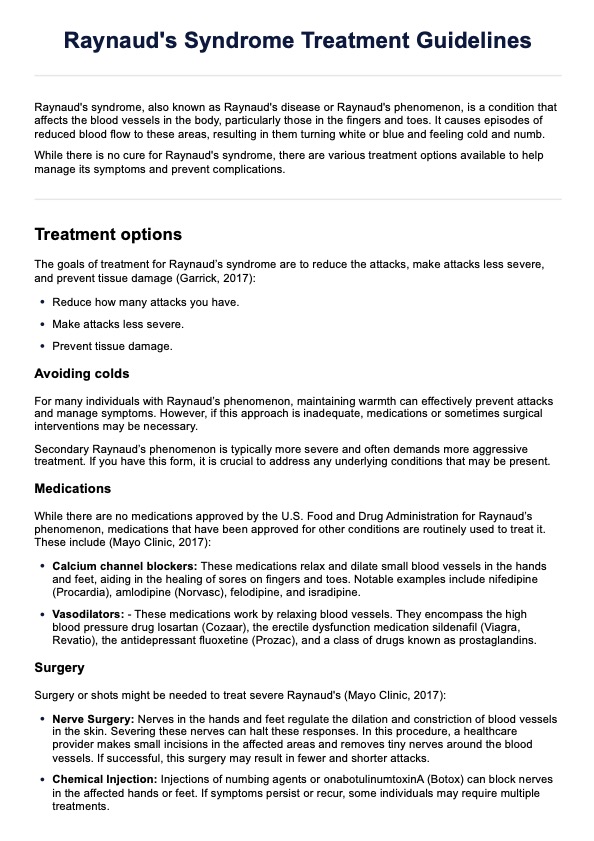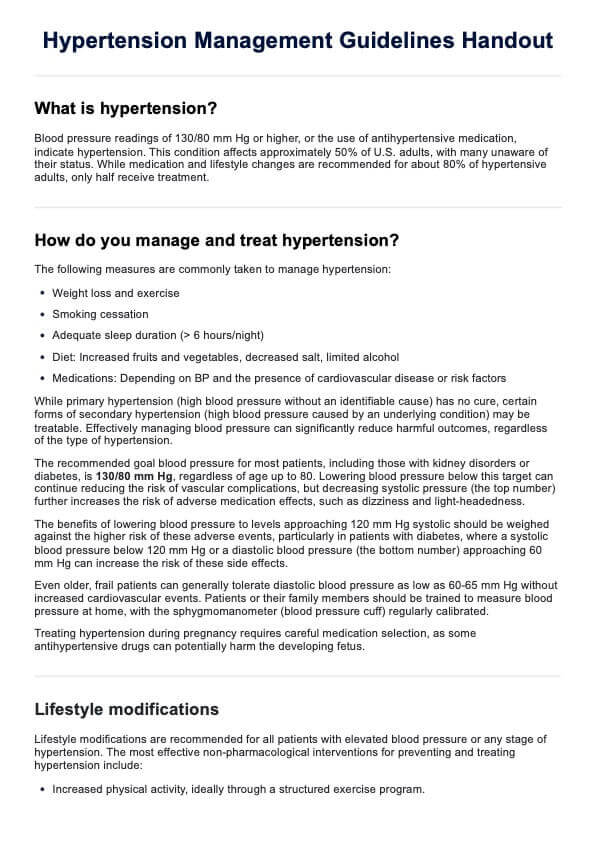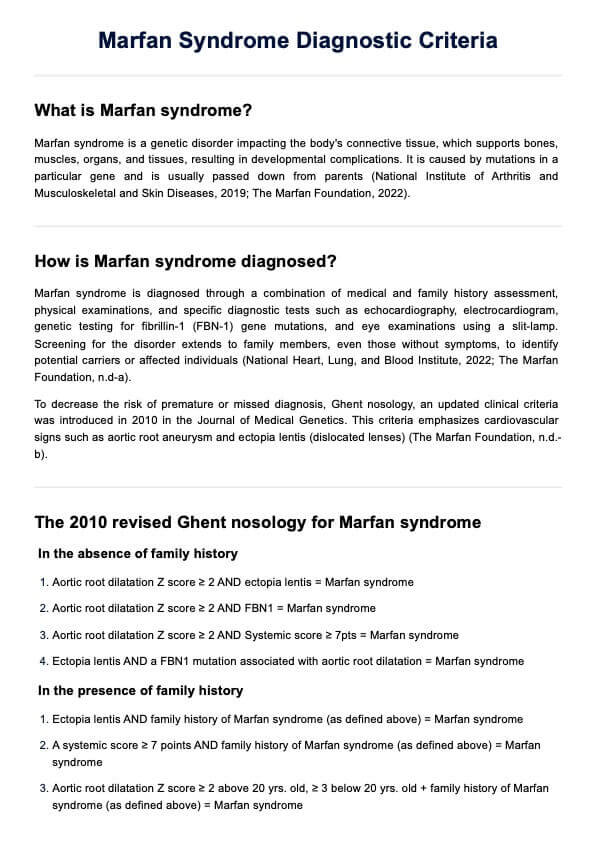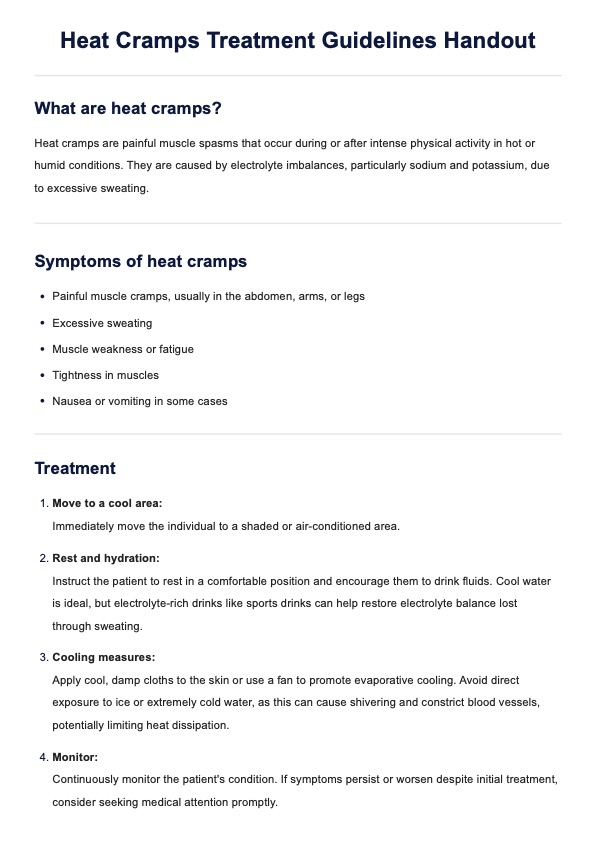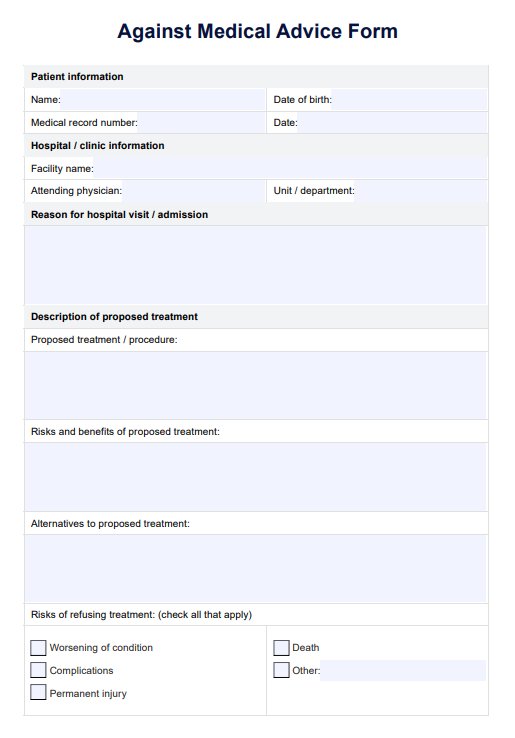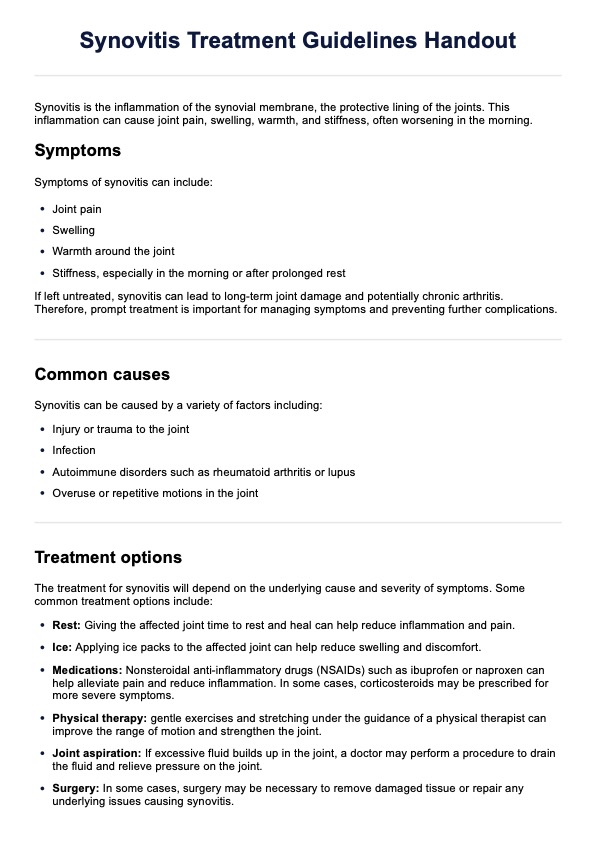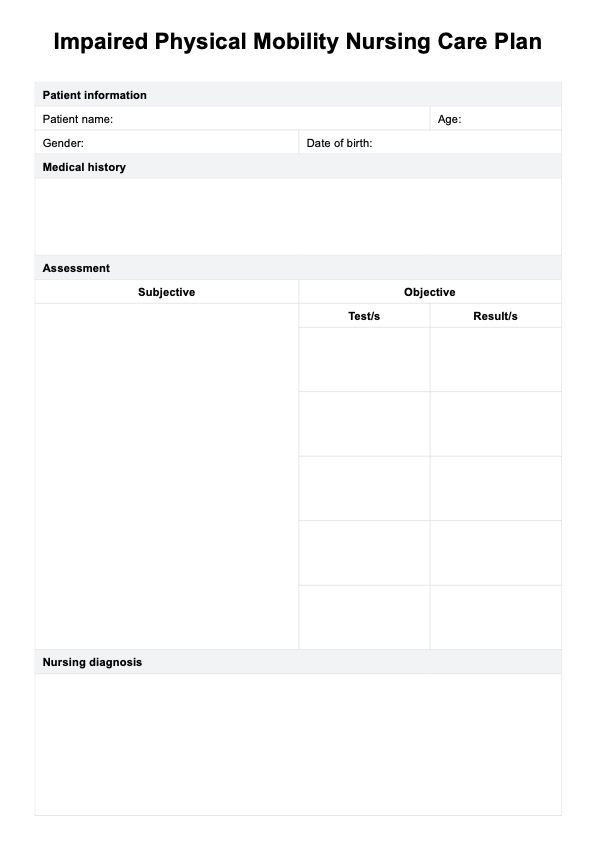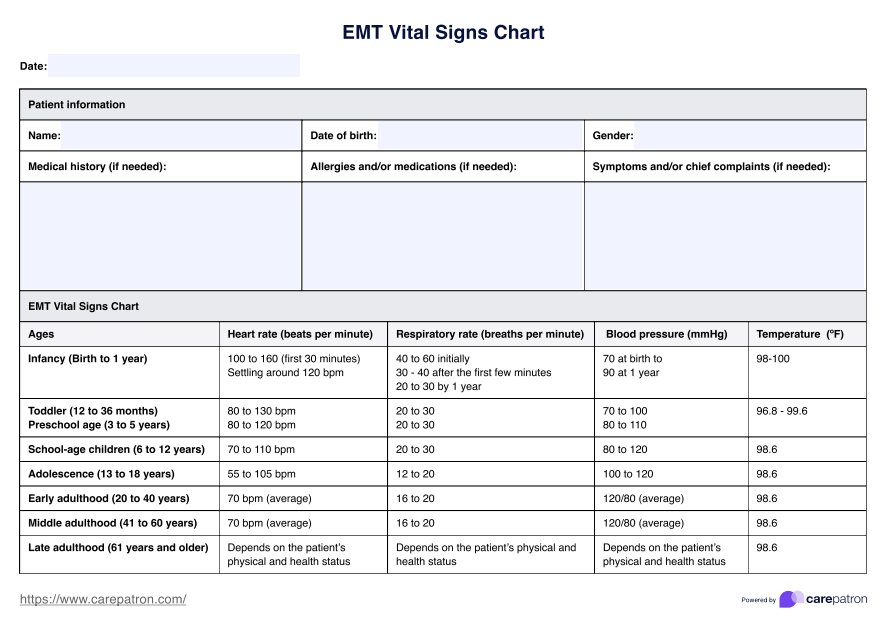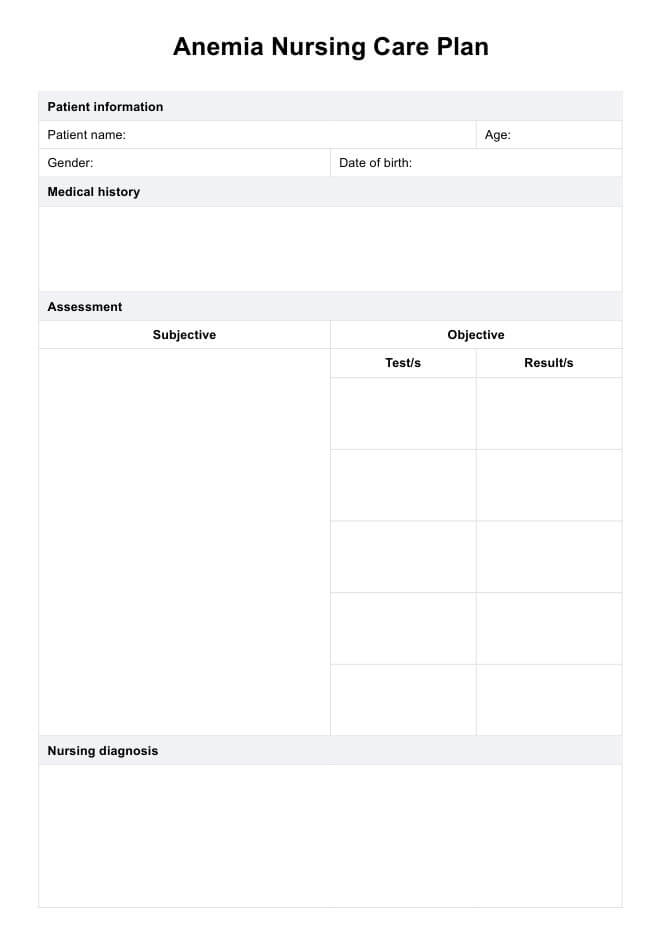Osteomyelitis Nursing Care Plan
Use our Osteomyelitis Nursing Care Plan Template to plan and provide effective patient-centered care.


What is an Osteomyelitis Nursing Care Plan Template?
An osteomyelitis nursing care plan is a vital document that outlines the necessary care components for patients diagnosed with a bone infection. Effective nursing interventions are crucial to manage symptoms, prevent complications, and promote overall well-being.
The template typically includes several key elements:
- Patient information: Basic patient details such as name, age, gender, medical history, and date of birth.
- Assessment: Includes subjective data (patient-reported symptoms like pain or discomfort) and objective data (clinical observations like fever, wound appearance, lab results, or imaging studies).
- Nursing diagnosis: Based on the assessment, nursing diagnoses are formulated using NANDA nursing diagnoses statements, such as “Impaired physical mobility related to pain and infection” or “Acute pain related to inflammation of the bone.”
- Goals and outcomes: Includes both short-term and long-term goals for managing symptoms and improving the patient’s quality of life.
- Nursing interventions: Specific actions the nurse will take to address the nursing diagnosis, such as administering antibiotics, monitoring wound healing, and educating the patient on infection prevention.
- Rationale: The clinical reasoning behind each intervention, explaining why specific actions are taken.
- Evaluation: Measures progress by assessing if the patient’s condition improves, using criteria such as reduced pain, improved mobility, or infection control.
Using a standardized nursing care plan template for osteomyelitis, healthcare providers can ensure that all aspects of patient care are systematically addressed, promoting consistency and quality in care delivery. This helps achieve optimal patient outcomes and enhances the overall quality of nursing care provided to individuals with osteomyelitis.
Osteomyelitis Nursing Care Plan Template
Osteomyelitis Nursing Care Plan Example
How does it work?
To effectively use an Osteomyelitis Nursing Care Plan Template, follow these steps:
Step 1: Access the template
Start by clicking the "Use Template" button to open the template in the Carepatron app. You can customize it as needed, then fill it out, print it, or share it. Alternatively, you can download a non-customizable PDF version.
Step 2: Assess the patient
Conduct a thorough assessment of the patient, including both subjective (patient-reported) and objective (clinically observed) data. This may include taking blood cultures. Record findings in the respective sections of the template to inform the care plan.
Step 3: Formulate the nursing diagnosis
Based on the assessment data, identify relevant nursing diagnoses using NANDA-approved statements. Record these diagnoses in the template to target specific care interventions.
Step 4: Set goals and outcomes
Collaborate with the patient to establish short-term and long-term goals. These should be realistic and measurable, focusing on pain management and infection control, especially for acute osteomyelitis, as well as improving mobility.
Step 5: Implement interventions
Document the nursing interventions in the template, ensuring they are evidence-based and specific to the patient’s condition. Include rationale for each action to ensure all team members understand the purpose of the interventions.
Step 6: Evaluate the patient’s progress
Regularly evaluate the effectiveness of the interventions by assessing the patient’s response. Update the template accordingly to track progress and adjust the care plan as needed.
When would you use this template?
The Osteomyelitis Nursing Care Plan Template proves invaluable in various clinical scenarios where patients are diagnosed with osteomyelitis, a severe bone infection. Critical instances when healthcare practitioners should utilize this template include:
- Diagnosis confirmation: When a patient is newly diagnosed with osteomyelitis, the template is a structured tool for nurses to comprehensively assess the situation, identify relevant nursing diagnoses, and plan appropriate interventions.
- Hospital admissions: During hospital admissions for osteomyelitis, the template guides nurses in formulating care plans tailored to the patient's specific needs, ensuring a systematic approach to treatment, and facilitating communication among the healthcare team.
- Outpatient management: For patients receiving outpatient care for osteomyelitis, the template aids in planning interventions that can be implemented at home. It includes educational components to empower patients to manage their condition effectively.
- Post-surgical care: Following surgical interventions for osteomyelitis, the template assists in developing postoperative care plans. It addresses wound care, pain management, and rehabilitation to promote optimal recovery.
- Long-term care: In chronic osteomyelitis requiring long-term management, the template ensures continuity of care. It helps set realistic goals, manage symptoms, and prevent long-term complications.
- Collaborative healthcare teams: The template facilitates collaboration among healthcare professionals ensuring that all team members are on the same page regarding the patient's care plan. This promotes coordinated and efficient care delivery and reduces risk factors related to healthcare provider error.
The Osteomyelitis Nursing Care Plan Template is a versatile resource applicable across various healthcare settings, enabling practitioners to deliver consistent, evidence-based care to patients diagnosed with osteomyelitis. It is a practical tool for acute and chronic conditions, ensuring holistic, patient-centered care.
What do the results mean?
The results obtained from implementing an Osteomyelitis Nursing Care Plan can provide valuable insights into the patient's response to treatment, the effectiveness of interventions, and the overall management of osteomyelitis. Here are typical results and their implications:
- Reduction in reported pain levels: Effective pain management interventions, such as analgesics and non-pharmacological measures, successfully alleviate the patient's discomfort, contributing to improved quality of life.
- Resolution or containment of the infection: Successful administration of antibiotics and diligent wound care aid in the control or eradication of the bacterial infection, preventing its spread and reducing the risk of complications.
- Enhanced ability to move and perform activities: Interventions focusing on physical activity and rehabilitation contribute to improved mobility, reducing the impact of osteomyelitis on the patient's functional status.
- Absence or minimized occurrence of complications: The care plan effectively addresses potential complications such as abscess formation or pathological fractures, showcasing the success of preventative measures.
- Increased patient understanding and adherence: Education on osteomyelitis, medications, and self-care resonates with the patient, leading to better commitment to the prescribed treatment plan and increased awareness of warning signs.
- Observable progress in wound healing: Proper wound care, including dressing changes and infection control measures, fosters the healing process, reducing the risk of chronicity and
The template streamlines the documentation process, ensuring standardized, evidence-based care. Its availability promotes consistent, quality care for osteomyelitis patients across healthcare settings. It is also general enough that it can also be used for different or specific kinds of bone infections, such as pelvic osteomyelitis.
Commonly asked questions
Priority interventions for osteomyelitis are to administer pain medication, administer antibiotics to control the infection, provide wound care, and monitor for complications like abscess formation or sepsis.
Short-term goals include reducing pain, controlling the spread of infection, and promoting bone tissue recovery and wound healing within a few days to weeks of starting treatment.
Interventions include administering IV or oral antibiotics, providing appropriate wound care, monitoring for complications, promoting mobility, and educating the patient about lifestyle changes and medication adherence.
Red flags of osteomyelitis include severe, localized bone pain, swelling, warmth, and redness over the affected area, fever, fatigue, and persistent drainage from a wound near the injured or necrotic bone (or surgical site if it occurs after surgical intervention). In more advanced cases, patients may experience difficulty moving the affected limb, worsening pain around the diseased bone, or signs of systemic infection, such as chills or sepsis.


